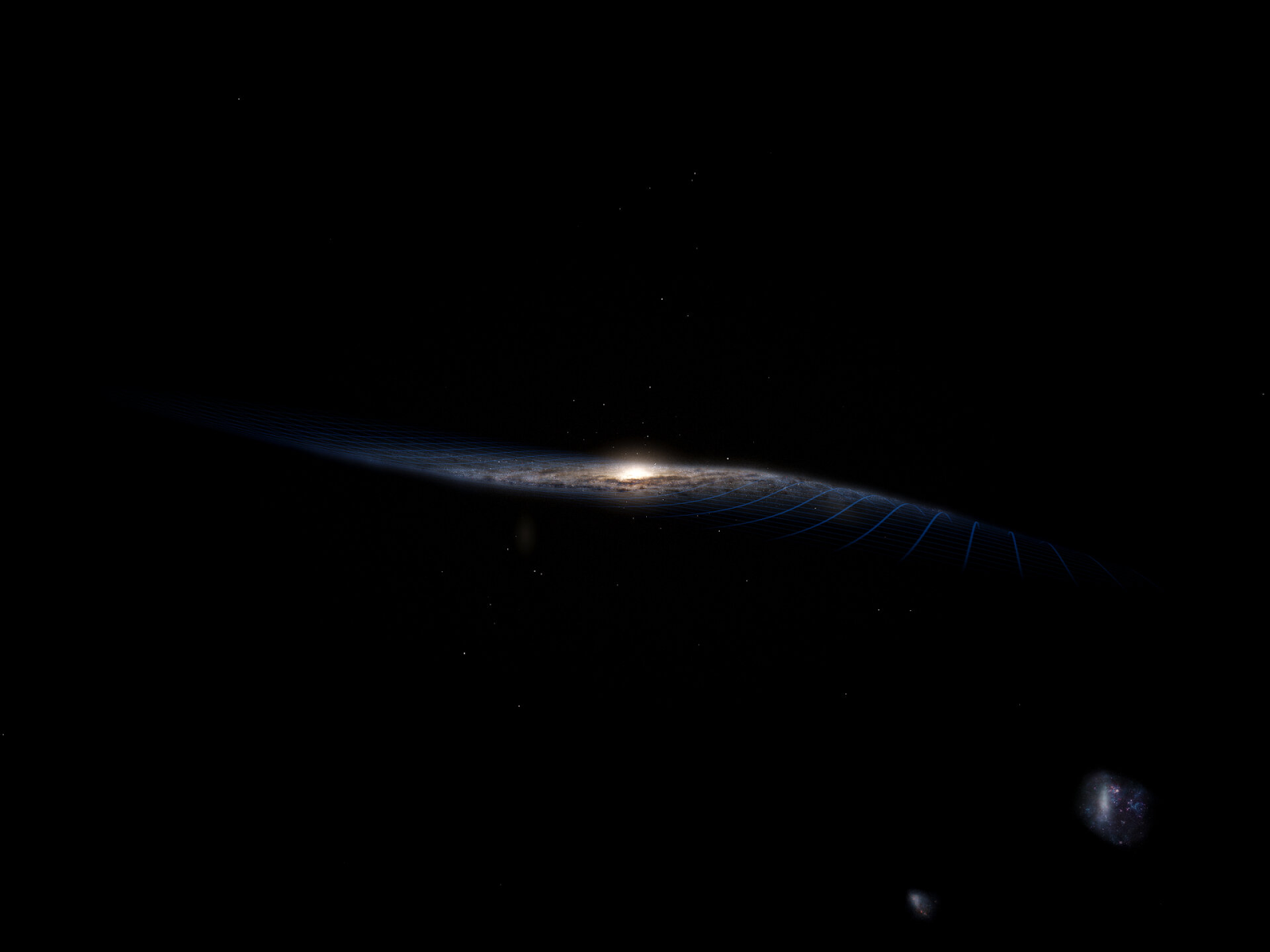A recent study has discovered the actual geometry of the diffuse star cloud that envelops the disc of our galaxy. For many years, astronomers believed that the stellar halo, a cloud of stars, was mostly spherical, like a beach ball. The star halo is now revealed to be oblong and slanted, much like a freshly booted football, according to a new model based on recent measurements. The results provide information on several astrophysical topics. The findings, for instance, shed insight into our galaxy’s past and its evolution while also providing hints for the ongoing search for the enigmatic element known as dark matter.
What does the study’s lead author have to say on this?
Researchers have recently discovered the geometry of the star halo more accurately than previously thought. According to Jiwon Jesse Han, the study’s lead author, the stellar halo surrounds our solar system and reaches out several hundred thousand light years above and below the star-filled plane of our galaxy. We lack the same kind of aerial, outside perspective on our own galaxy’s halo, unlike with distant galaxies, where we can simply look at them and measure their halos.
Further complicating matters, just around 1 percent of the galaxy’s total star mass is found in the stellar halo, which has turned out to be rather diffuse. But over time, astronomers have been able to distinguish thousands of stars that make up this halo from other Milky Way stars thanks to differences in their chemical composition, distances from one another, and motions across the sky.
Analysis of the Study
These investigations have shown astronomers that the distribution of halo stars is not uniform. Since then, the objective has been to investigate the spatial patterns of star over-densities, which manifest as bunches and streams, to determine the true origins of the stellar halo. The stellar halo was formed when a lone dwarf galaxy collided 7-10 billion years ago with our far-larger galaxy. The departed dwarf galaxy is amusingly known as Gaia-Sausage-Enceladus (GSE). This provides a more detailed account of how GSE and the Milky Way interacted long ago.
The triaxial ellipsoid, or football shape, is a result of two-star clusters that have been observed in the stellar halo. The pileups supposedly developed when GSE completed two orbits around the Milky Way. The heavier Milky Way served as the dwarf galaxy’s stronger gravitational attractor, and throughout these orbits, GSE would have slowed down twice at these locations, known as the apocenters. These pauses caused additional star loss from GSE. In the meantime, the tilt of the star halo suggests that GSE didn’t approach the Milky Way straight on, but rather at an incidence angle.
According to the study’s co-author Charlie Conroy, the stellar halo’s tilt and star distribution provide compelling evidence that our galaxy collided with a smaller galaxy 7–10 billion years ago. The tilted stellar halo strongly suggests that the underlying dark matter halo is similarly inclined. The discovery of the stellar halo’s most plausible configuration stands to move many astrophysical investigations forward while filling in basic details about our place in the universe.
This study was published in the journal The Astronomical Journal.
To ‘science-up’ your social media feed, follow us on Facebook, Twitter, or Instagram!
Follow us on Medium!





1 comment
[…] an international group of over 350 researchers, discovered that tiny neutrinos emit from the Milky Way. These neutrinos were detected by the IceCube Neutrino Observatory, a gigantic detector located at […]